INDUSTRY SNAPSHOT: CANNABIS PLANT PATENTS
A plant patent is granted to an inventor who has invented or discovered and asexually reproduced a distinct and new variety of plant, other than a tuber propagated plant or a plant found in an uncultivated state. For more information about plant patents, click here.
In this Industry Snapshot, we review the cannabis plant patents issued by the U.S. Patent Office between December 20, 2016 and June 29, 2021.
What is Cannabis?
Cannabis is a genus of flowering plants within the family Cannabaceae—a family having about 11 genera. Cannabis and Humulus (hops) are the only genera within the family that contain economically significant species.
There are three species in the Cannabis genera: Cannabis sativa (C. sativa), Cannabis indica (C. indica), and Cannabis ruderalis (C. ruderalis), although there is some debate whether C. ruderalis is a distinct species from or a subspecies of C. sativa. Classification of a plant into a species is based on the plant phenotypes and secondary metabolite profiles. [i]
At least 545 distinct compounds have been isolated from cannabis plants. Those compounds encompass 20 different classes of chemical compounds, including cannabinoids, terpenes, terpenoids, amino acids, nitrogenous compounds, simple alcohols, aldehydes, ketones, esters, lactones, acids, fatty acids, steroids, non-cannabinoid phenols, pigments, flavonoids, vitamins, proteins, enzymes, glycoproteins, and hydrocarbons. [ii] A variety of the compounds in found in cannabis are biologically active chemicals, called phytochemicals, which are concentrated in a resin found in the glandular trichomes of the plant. Phytochemicals can affect the human body in various ways and, in some cases, treat diseases. The key classes of phytochemicals in a cannabis plant are cannabinoids and terpenes. [iii]
At least 113 different cannabinoids have been isolated from cannabis. [iv] Some of the most studied cannabinoids are THC (tetrahydrocannabinol), CBD (cannabidiol), and CBN (cannabinol). Some others include CBG (cannabigerol), THCA (tetrahydrocannabinolic acid), CBGA (cannabigerolic acid), CBC (cannabichromene), CBDA (cannabidiolic acid), and THCV (tetrahydrocannabivarin). Most cannabinoids exist in two forms: as acids and as neutral (decarboxylated) compounds. [v] More specifically, several cannabinoids exist in the acidic form while the plant is alive and growing, and in neutral form after the plant has been dried for human consumption. For example, the primary psychoactive and medicinal component in cannabis, THC, is formed by the decarboxylation of THCA during the drying step after harvest. [vi] Some cannabinoids are formed from the metabolism of other (non-acidic) compounds. For example, CBC and CBD—two of the most important non-psychoactive medicinal compounds in cannabis—result from the metabolism of CBG.
Over 100 different terpenes have been identified from cannabis plants. [vii] The more common terpenes found in cannabis include terpinolene, linalool, β-myrcene, citronellol, α-pinene, limonene, α-humulene, β-caryophyllene, β-pinene, borneol, camphene, sabinene, ocimene, α-terpinene, γ-3-carene, L-fenchone, p-cymene, α-phellandrene, α-terpineol, and fenchol. Most high potency cannabis strains contain high quantities of β-myrcene, β-caryophyllene, and linalool, along with an assortment of other terpenes. [viii]
Cannabis Patents
As of the date of this article, there have been 26 cannabis plant patents issued by the U.S. Patent Office. The first patent was granted near the end of 2016. Then, after no issued cannabis patents for a couple of years, 3 were issued in 2019; 9 were issued in 2020; and 13 have been issued so far in 2021. In addition to the THC-containing varieties, several patents are directed to hemp plants. A brief summary of each patent is provided below.
2016
1) PP27,475 (20 Dec. 2016) | Ecuadorian Sativa


2019
2) PP30,434 (23 April 2019) | LW-BB1


3) PP30,639 (2 July 2019) | CW2A




4) PP30,668 (9 July 2019) | DD-CT-BR5




2020
5) PP31,535 (10 March 2020) | Lemon Crush OG
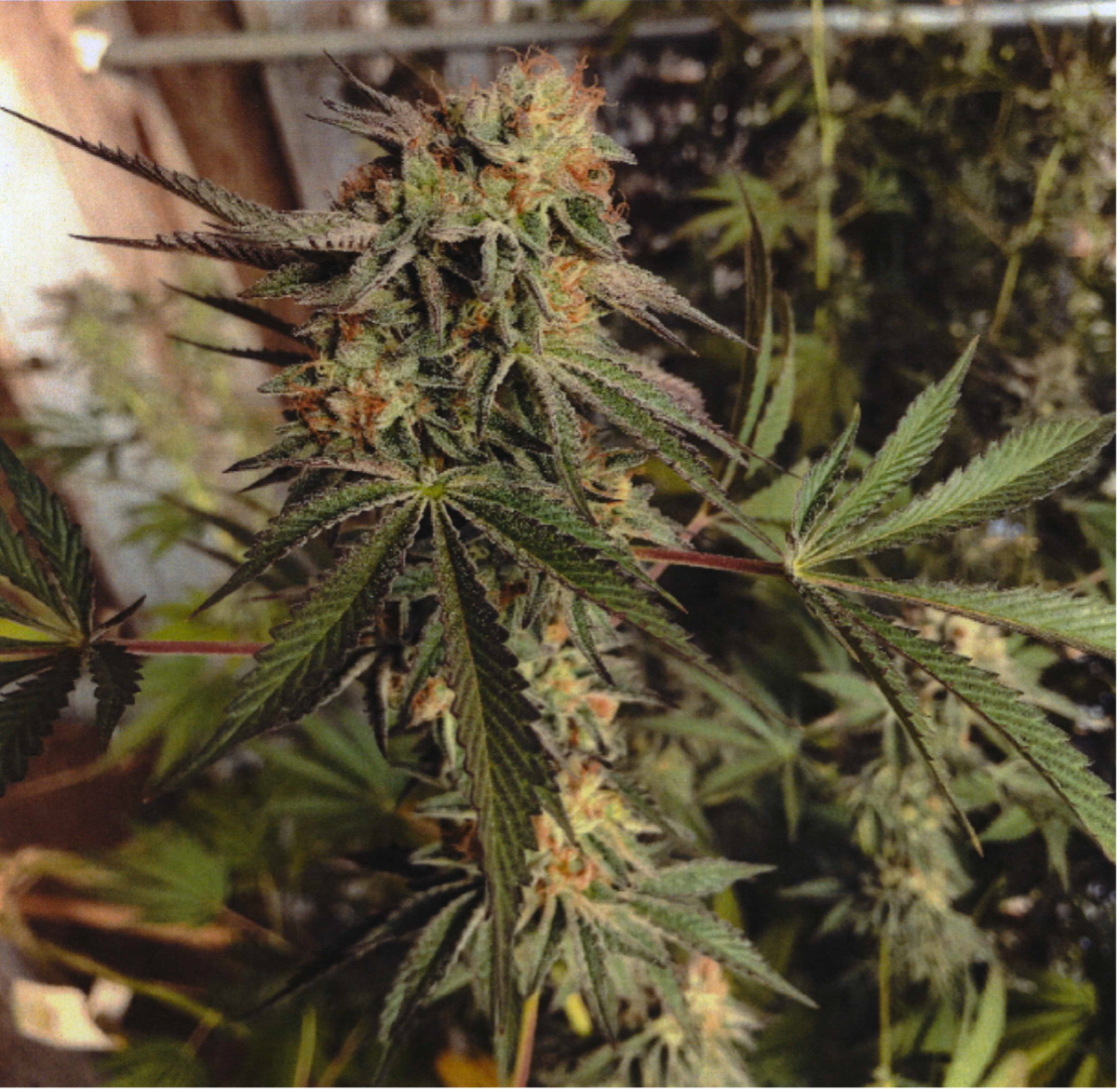

6) PP31,707 (28 Apr. 2020) | Grape Lolipop
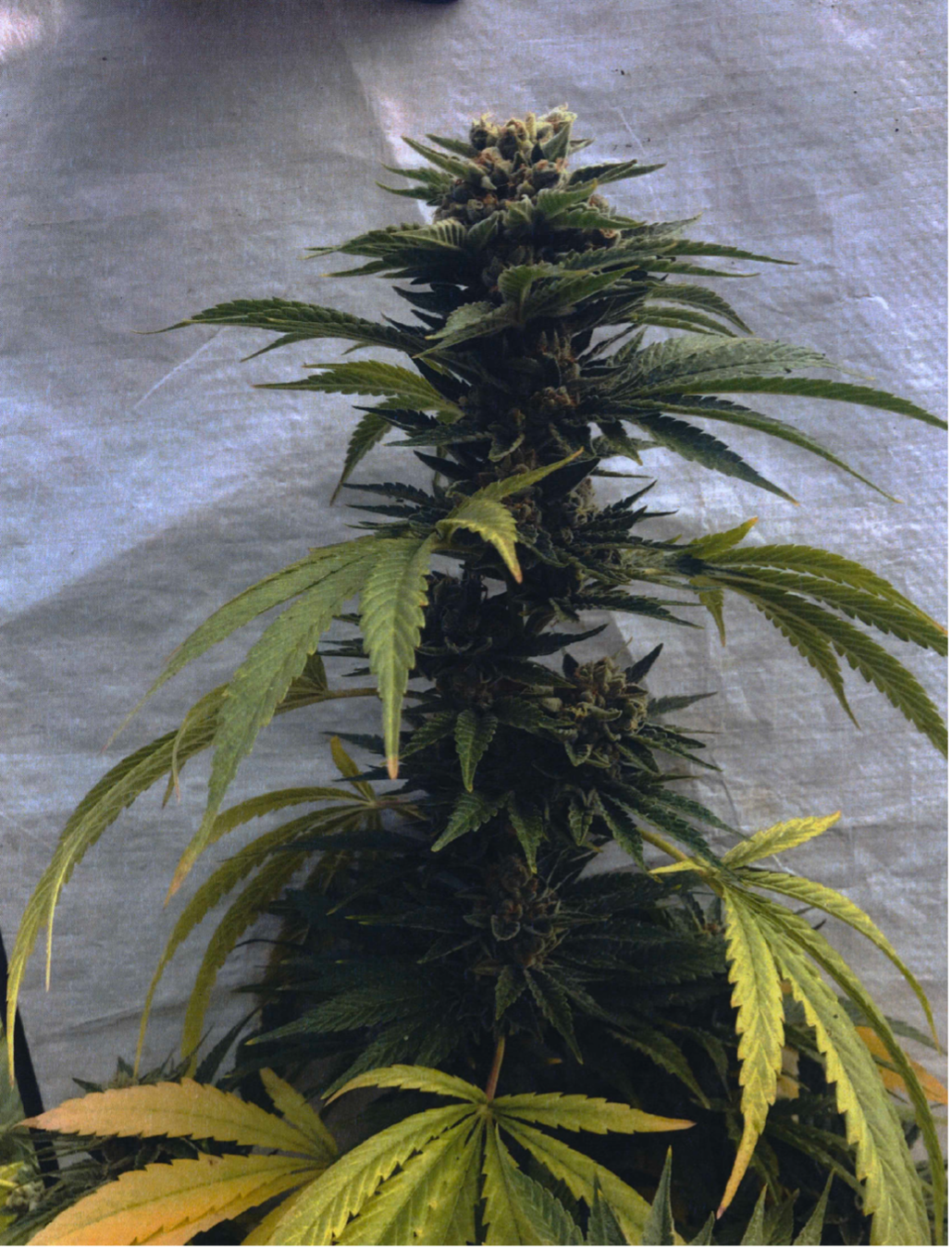

7) PP31,724 (5 May 2020) | Primo Cherry
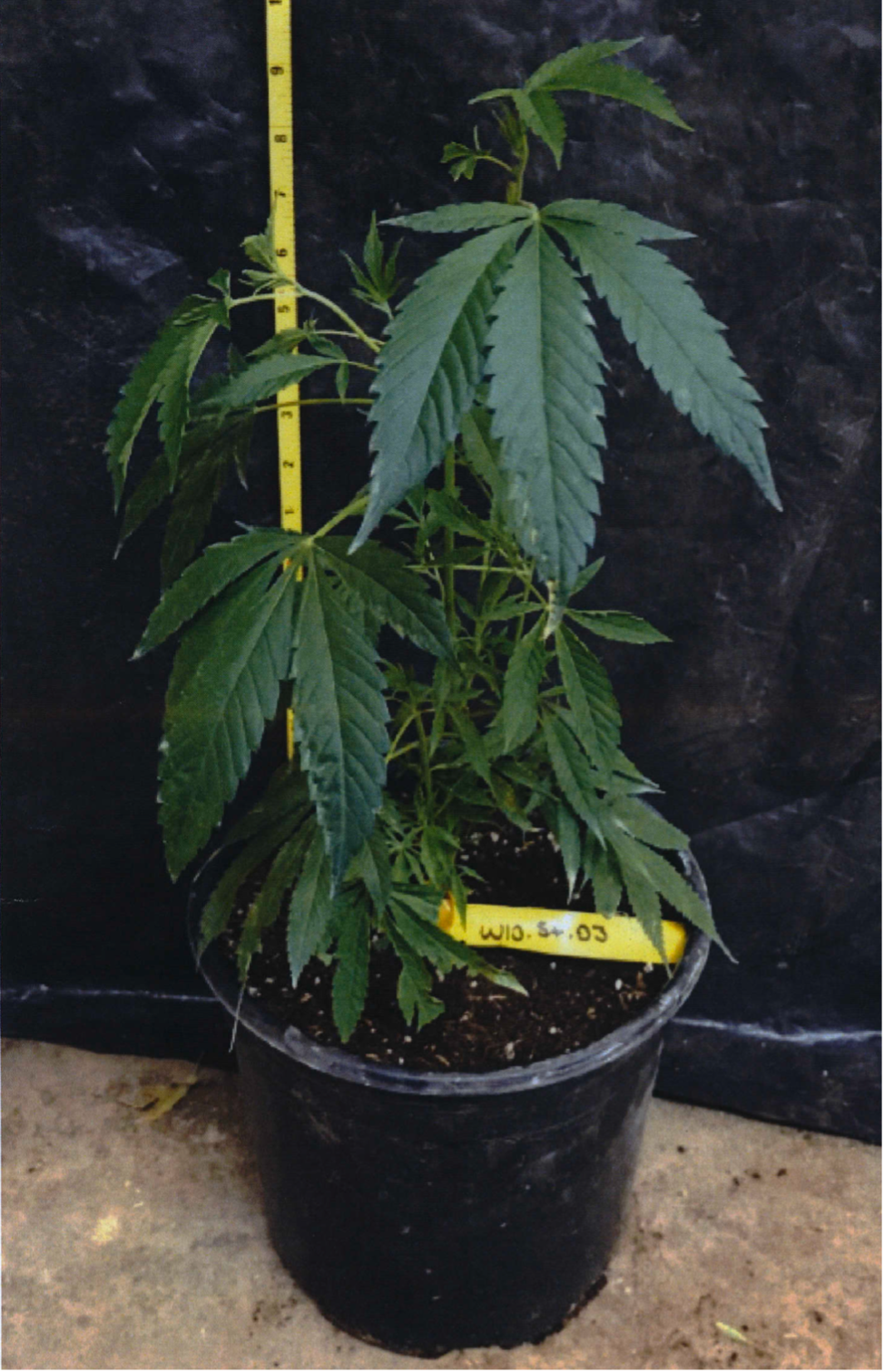

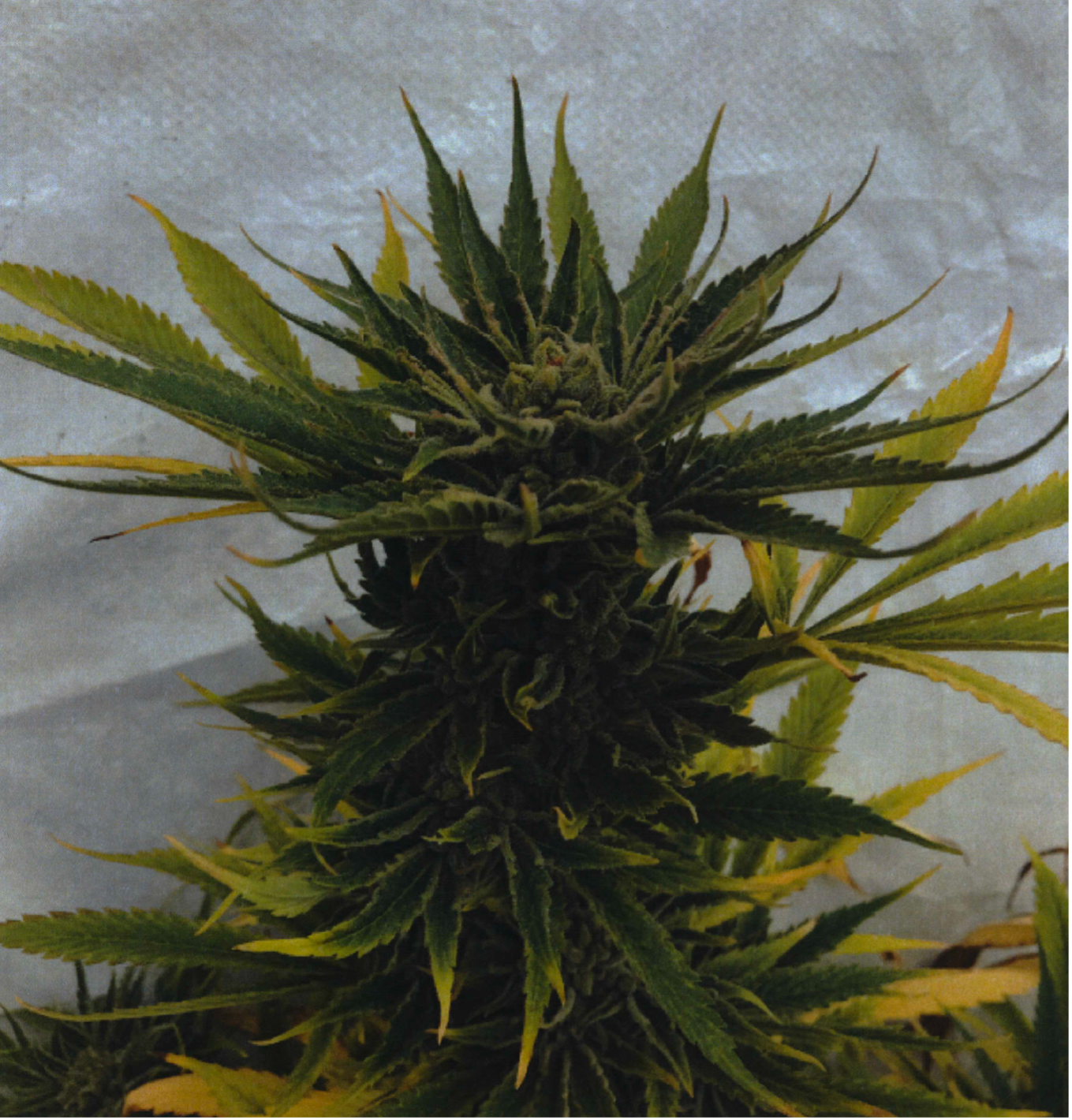

8) PP31,752 (12 May 2020) | Cake Batter Cookies
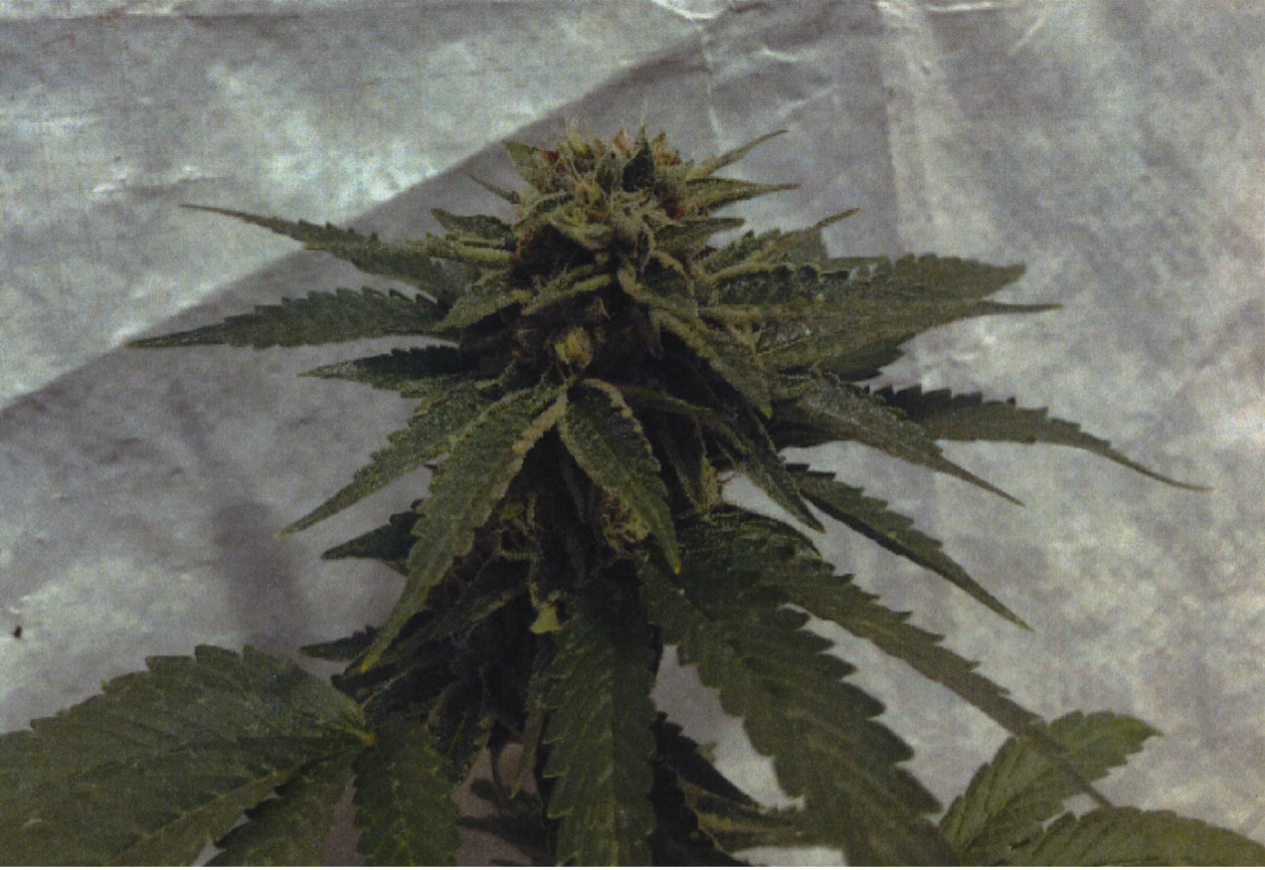

Cake Batter Cookies was derived from two proprietary cultivars: a female parent known as K1 and a male parent known as 1681.20. Cake Batter Cookies has a higher cannabinoid content, a higher terpene content, and a higher THC:CBD ratio than either parent. Cake Batter Cookies has a floral lavender smell.
9) PP31,874 (16 Jun. 2020) | Holy Crunch
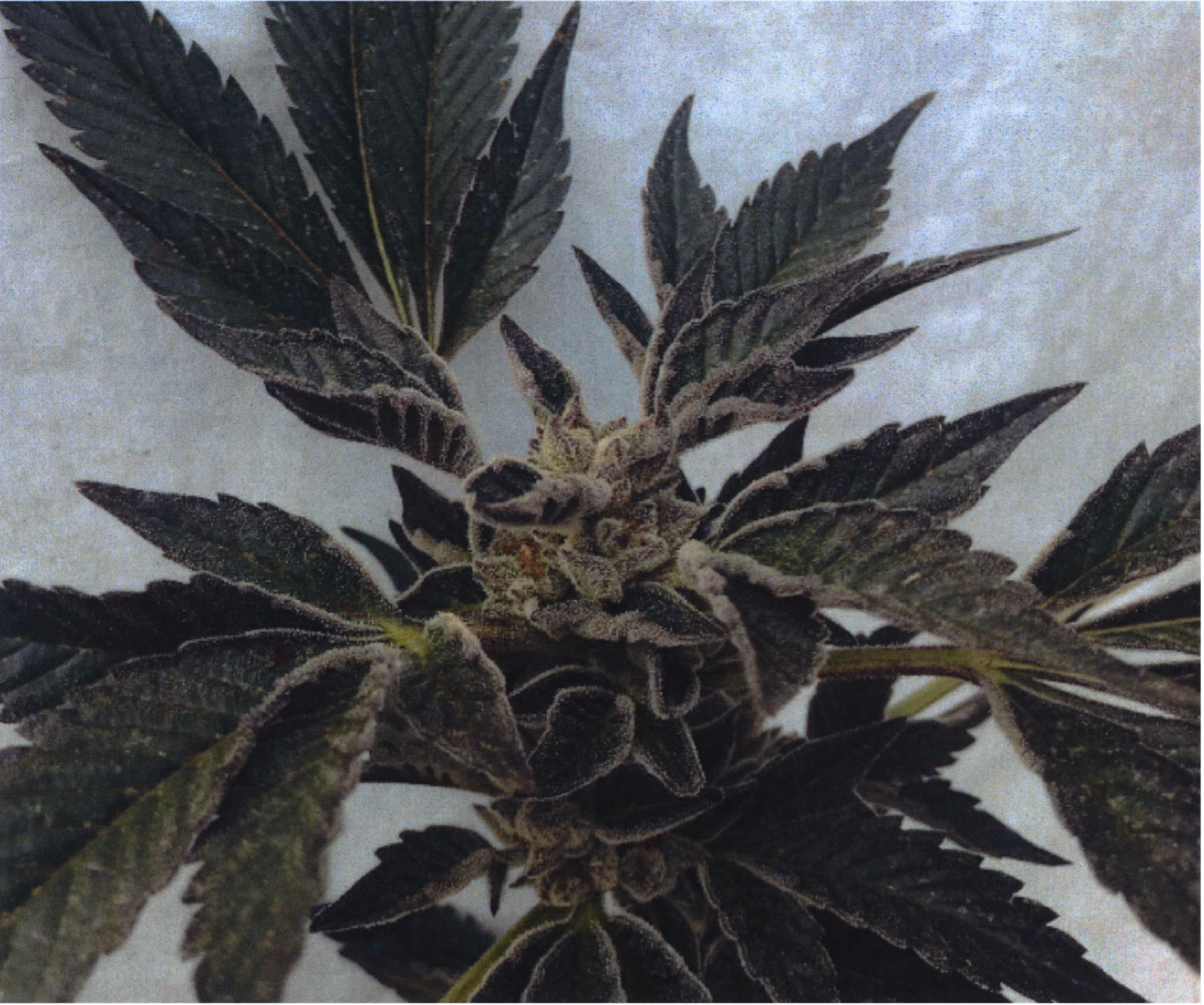

10) PP31,917 (30 Jun. 2020) | Raspberry Punch
Raspberry Punch is a hybrid variety (C. sativa, C. indica) that was derived from a controlled-cross between two proprietary cultivars. The female parent was known as 18 and the male parent was known as C11.
Raspberry Punch has a smell of earth tones and hints of floral sweetness. The THC content for Raspberry Punch falls within the range of about 4.94-8.64%.
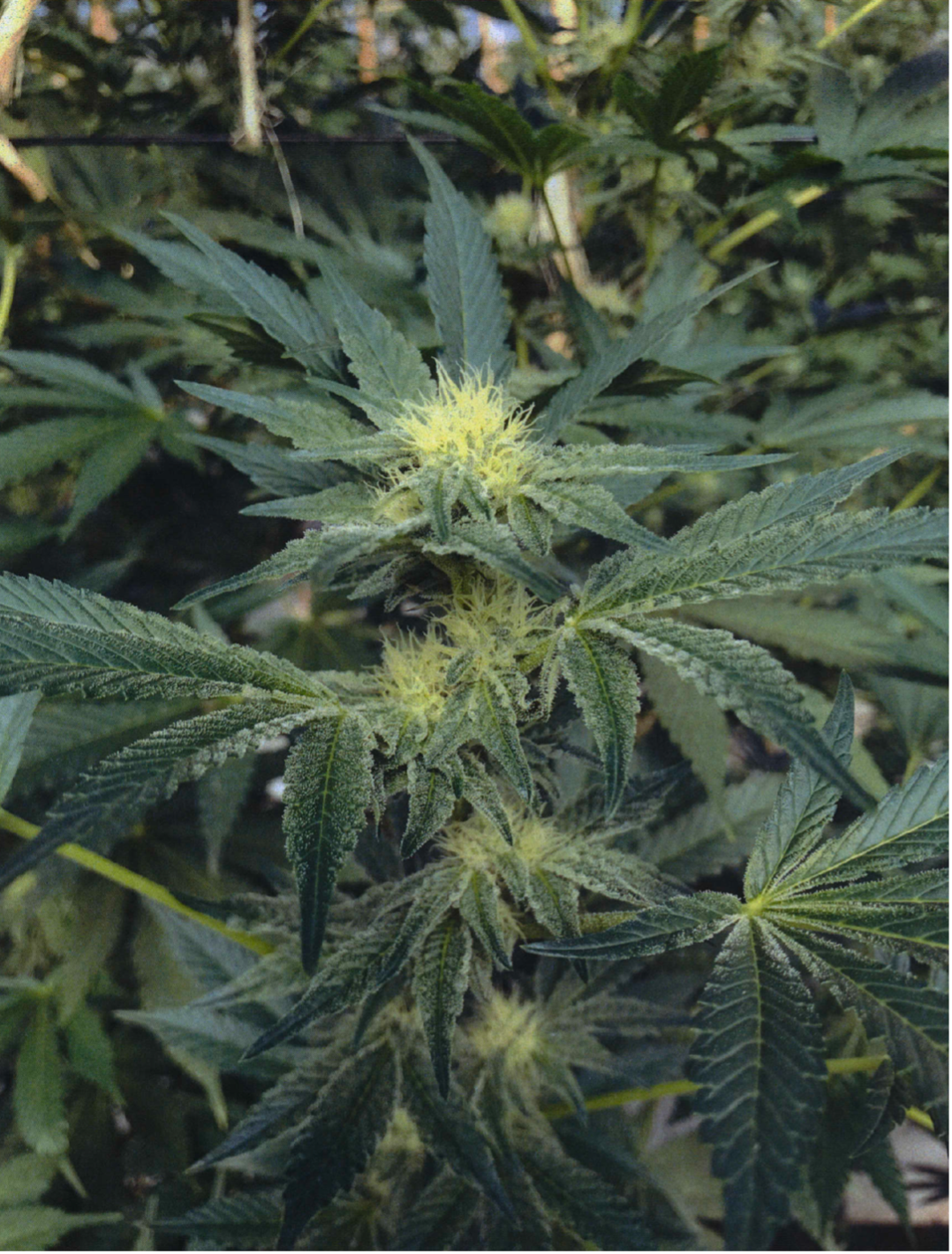

11) PP31,918 (30 Jun. 2020) | Rainbow Gummeez
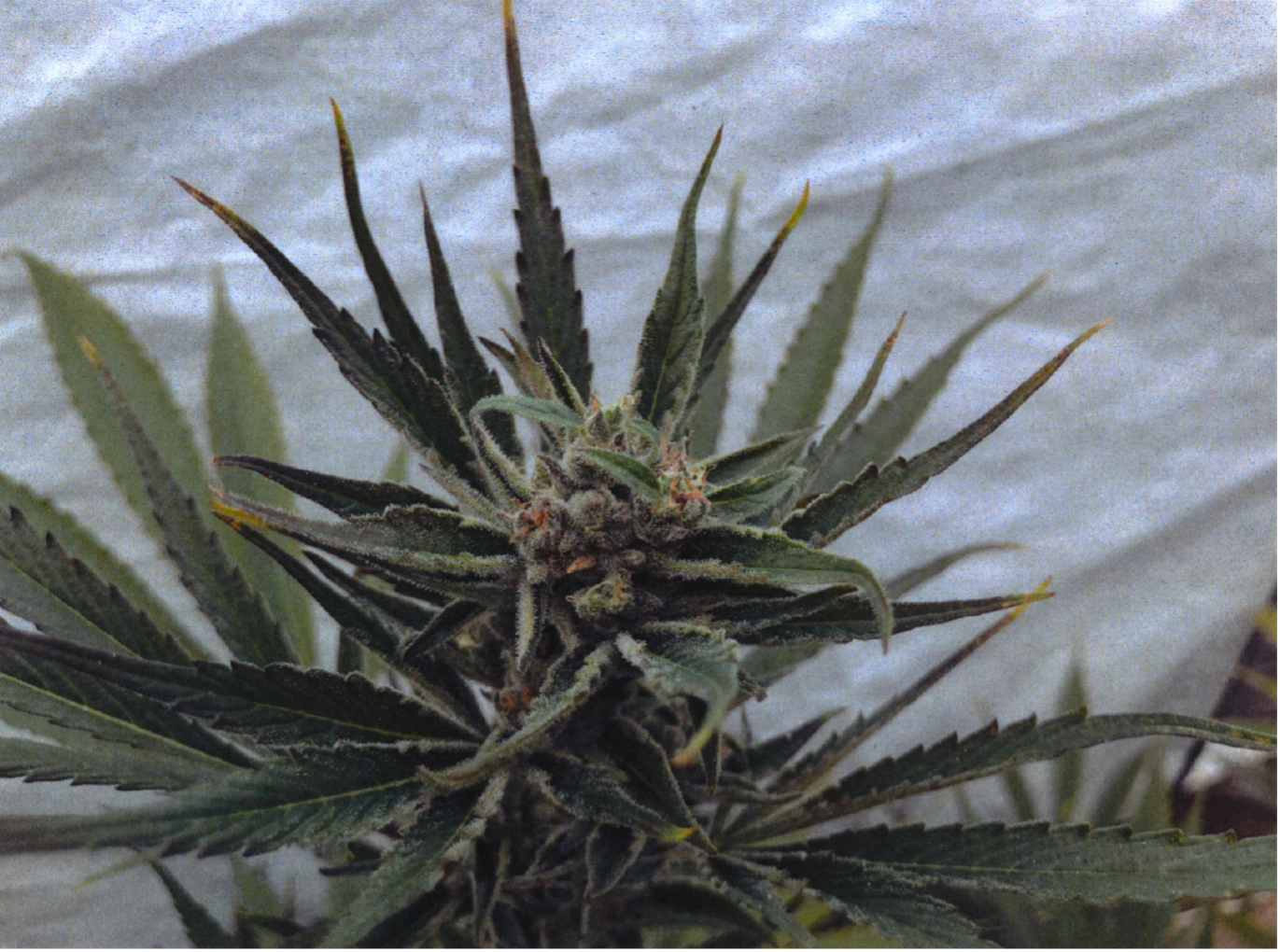

12) PP32,318 (13 Oct. 2020) | MR2017002
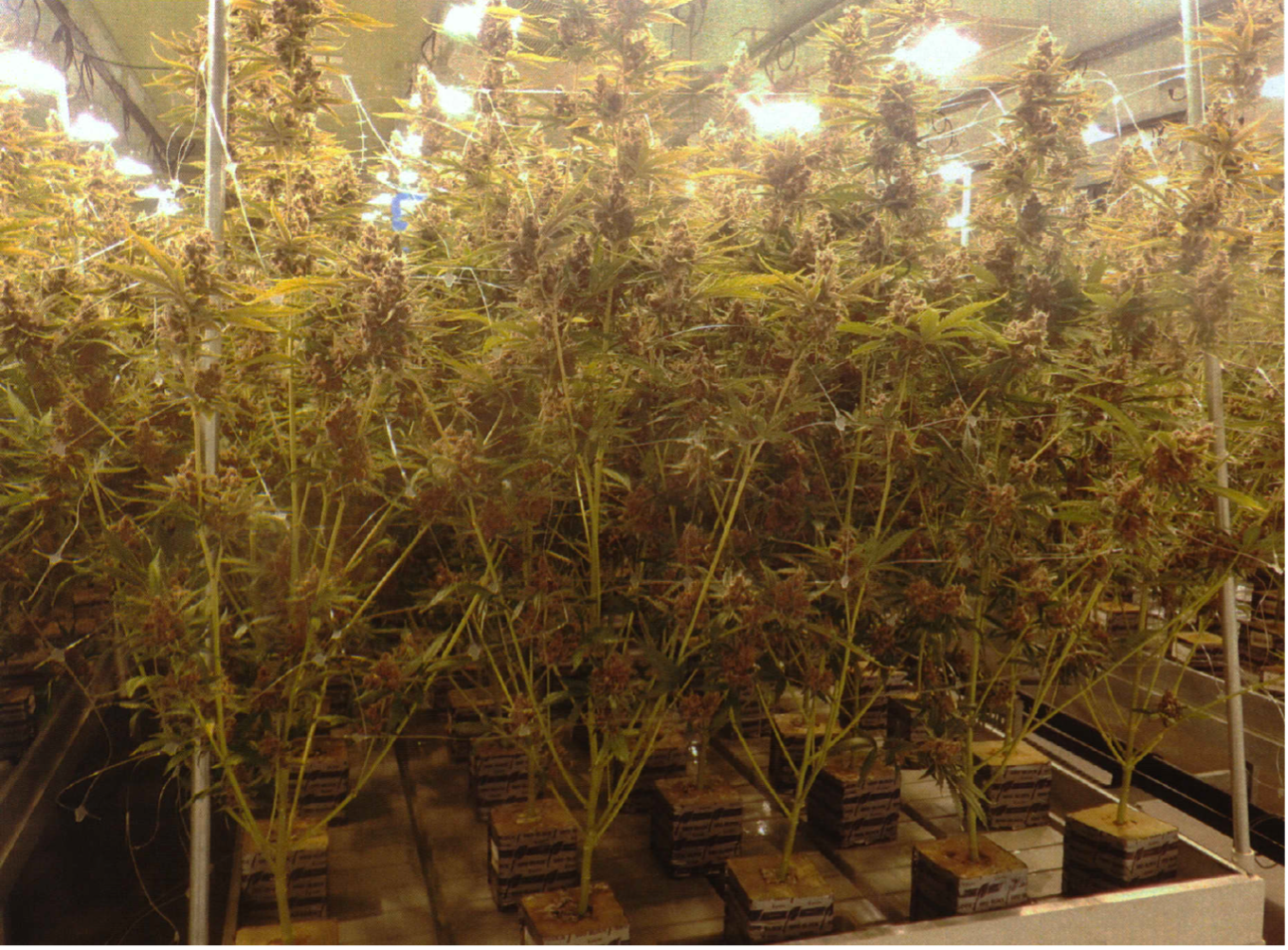

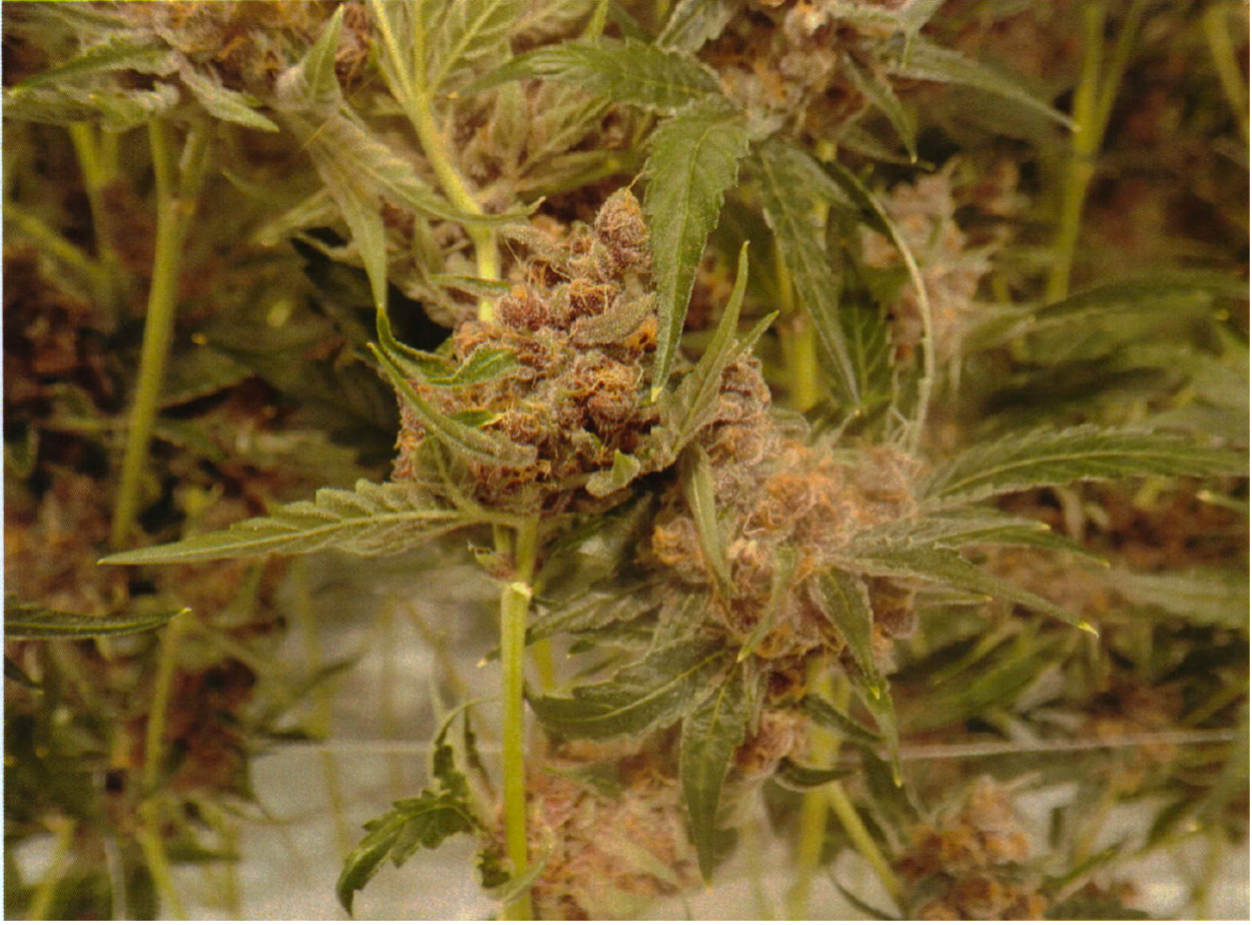

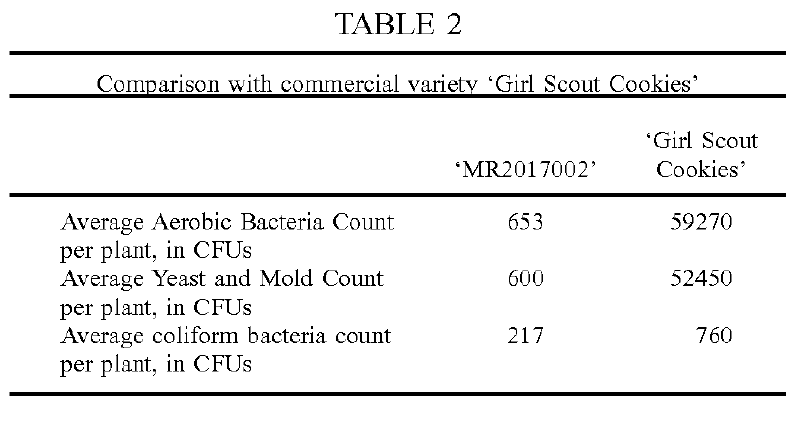

13) PP32,473 (17 Nov. 2020 | Bihemp 050924


2021
14) PP32,725 (5 Jan. 2021) | PAN2020
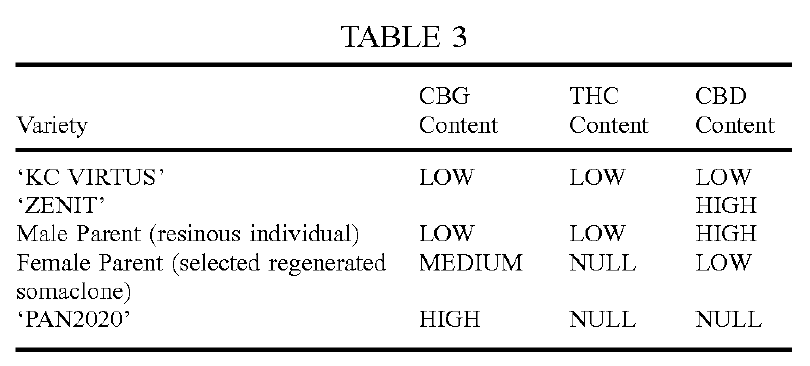

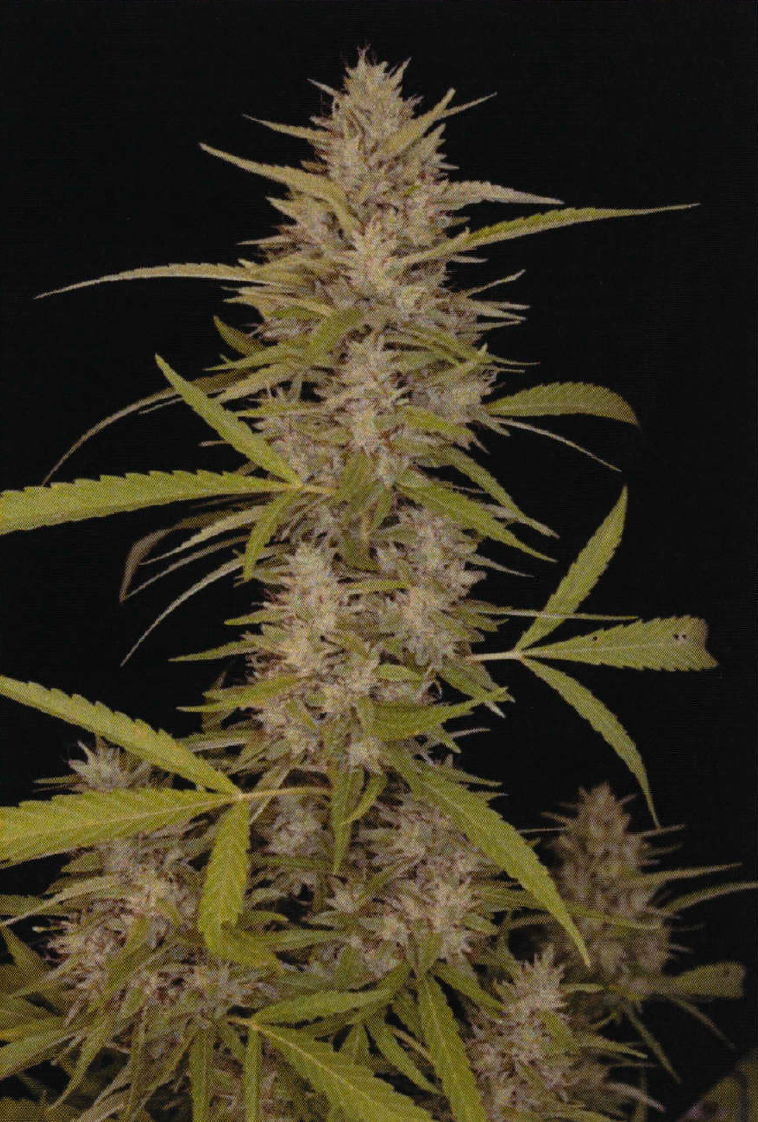

15) PP33,000 (27 Apr. 2021) | OG Citron
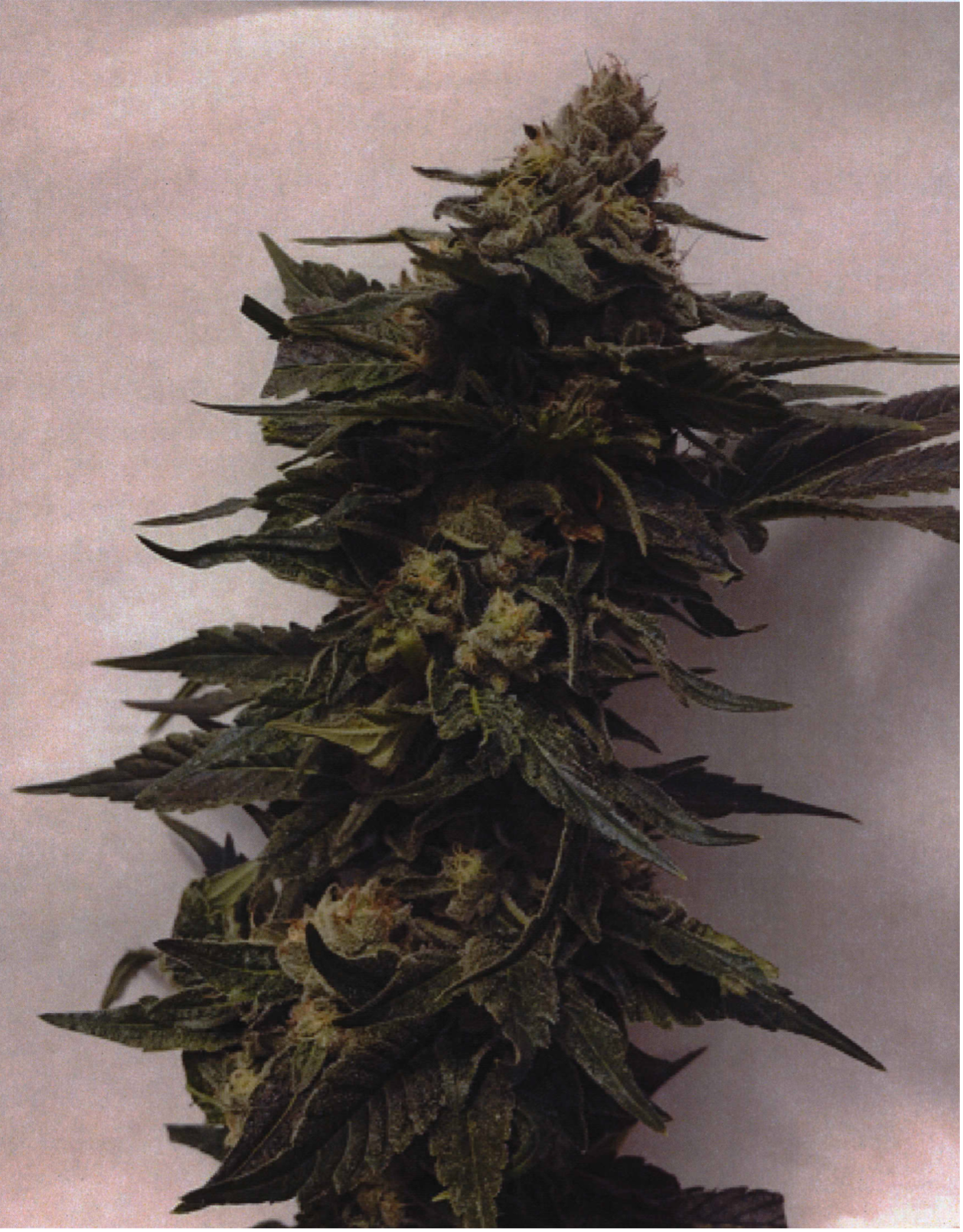

16) PP33,001 (27 Apr. 2021) | MR2018001


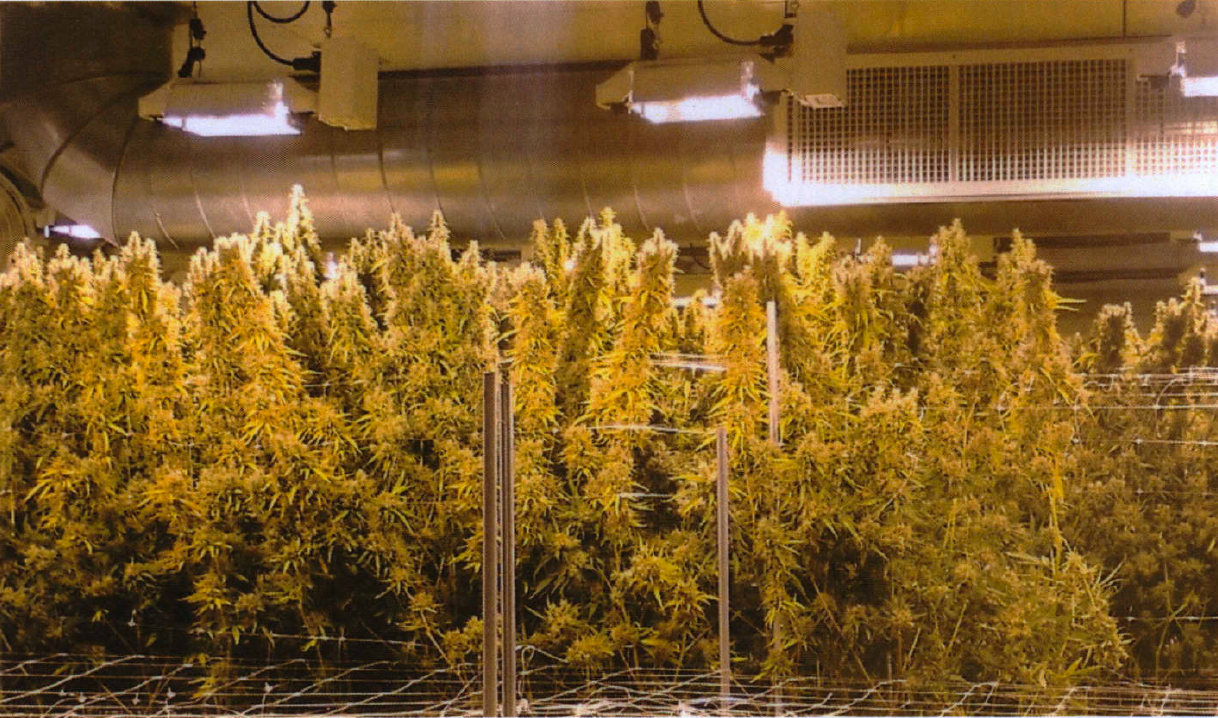

17) PP33,002 (27 Apr. 2021) | MR2018003
MR2018003 is a new C. sativa variety developed in Canada having about 16.77% THC and 0% CBD by dry weight. MR2018003 originated from a controlled cross between the female C. sativa variety “Pakistan Chitral Kush Landrace” and the male C. sativa variety “UK Cheese.” The variety “Girl Scout Cookies” is identified as the closest variety to MR2018003, which is distinguishable by its increased resistance to microbial growth.
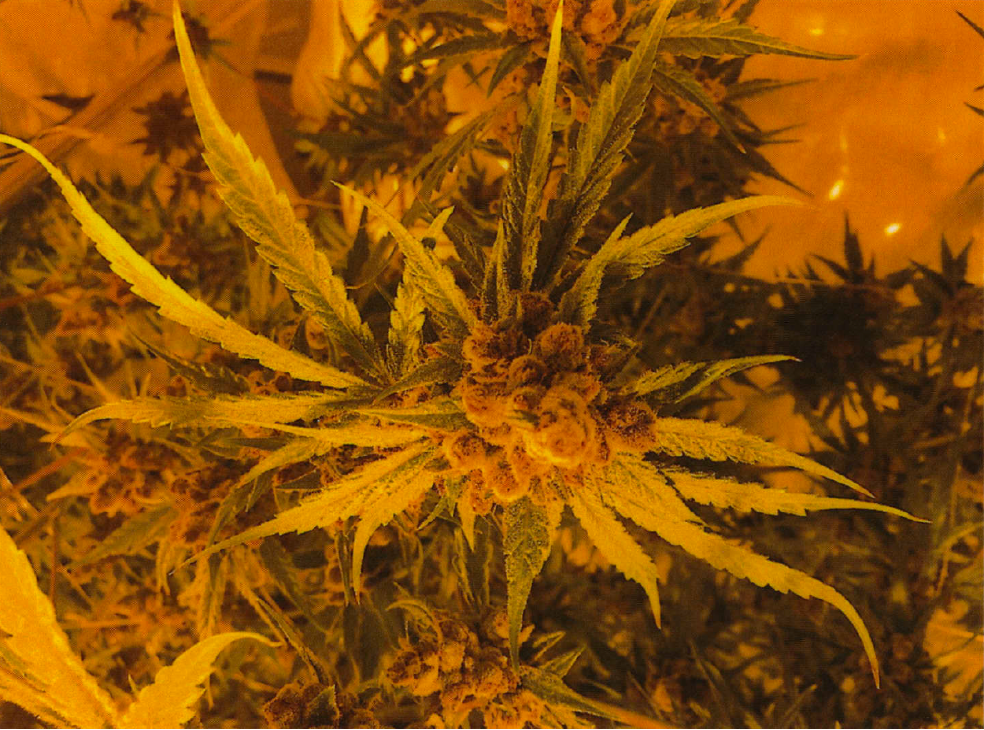

18) PP33,073 (18 May 2021) | MR2018002
MR2018002 is a new C. sativa variety developed in Canada having about 6% THC and 13% CBD by dry weight. MR2018002 originated from a controlled cross between a female C. sativa variety of unknown background and a male C. sativa variety of unknown background. The variety “Girl Scout Cookies” is identified as close to MR2018002, which is distinguishable from the former by its increased resistance to microbial growth.
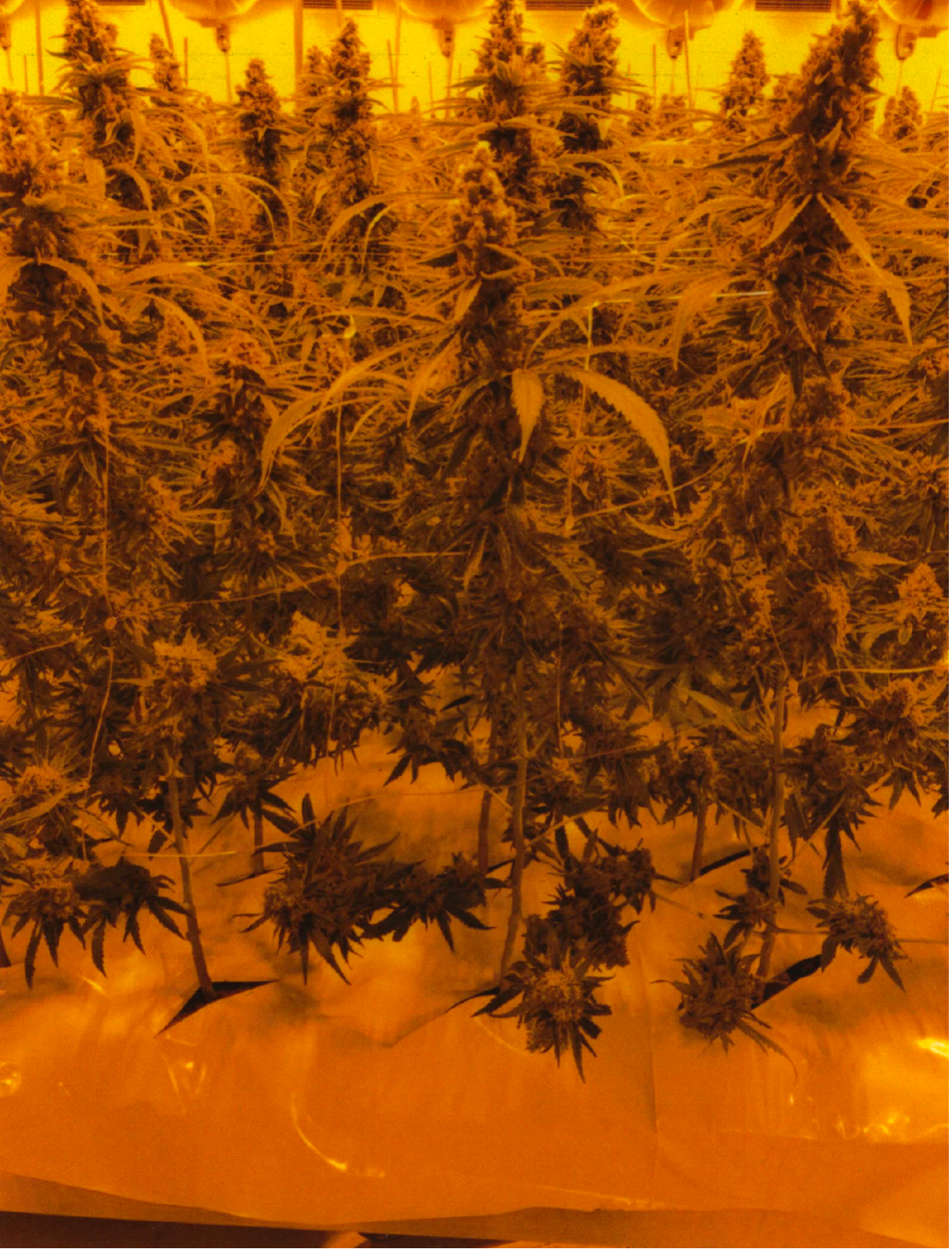



19) PP33,143 (8 Jun. 2021) | Anew
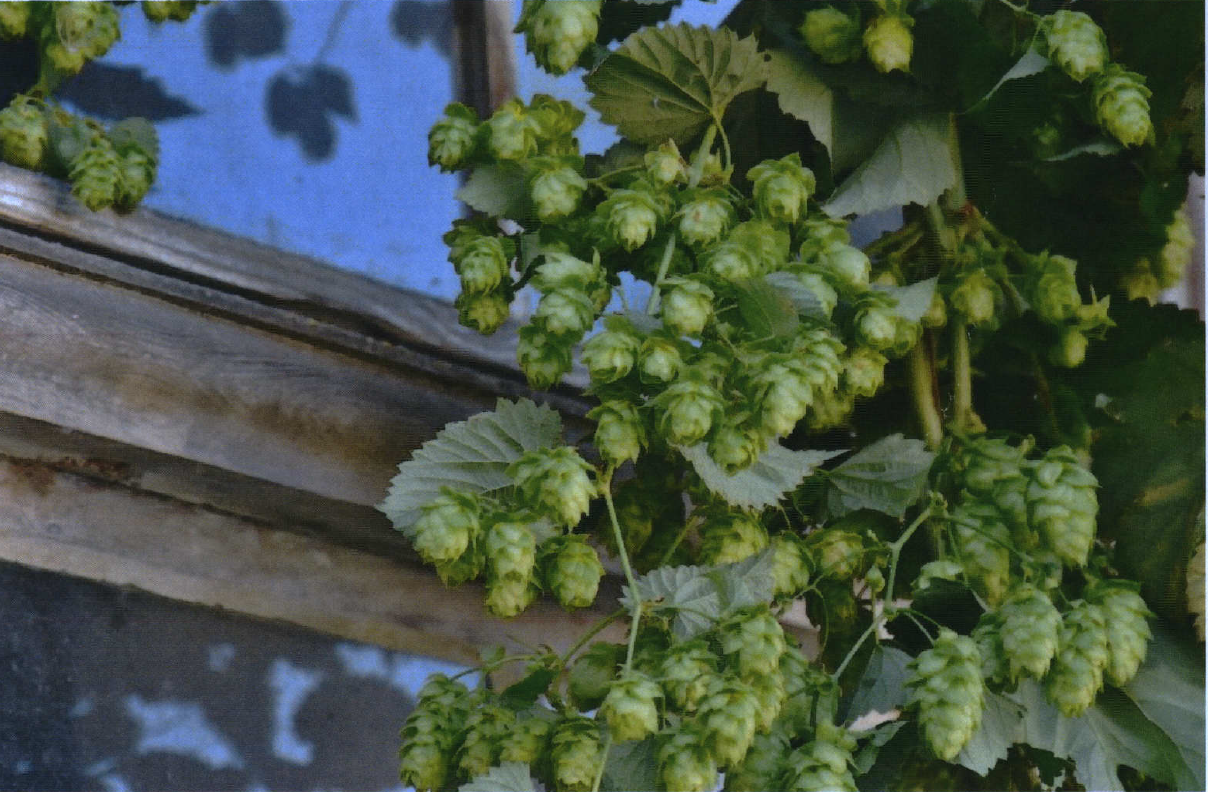



20) PP33,162 (15 Jun. 2021) | Eighty Eight
Eighty Eight is a hybrid variety (C. sativa, C. indica) that was derived a female hybrid developed from a clone called “Oracle” crossed with a male plant called “American Feral,” and a father developed from a hemp seed named “Otto II.” Oracle is a stable resin producing female with a CBD to THC ratio of 20:1. Eighty Eight—the result of working with more than 4,000 individual variations of the hybrid—has a stabilized and median CBD to THC ratio of 31:1, which consistently meets the requirement for hemp (i.e., 0.3% or less THC).
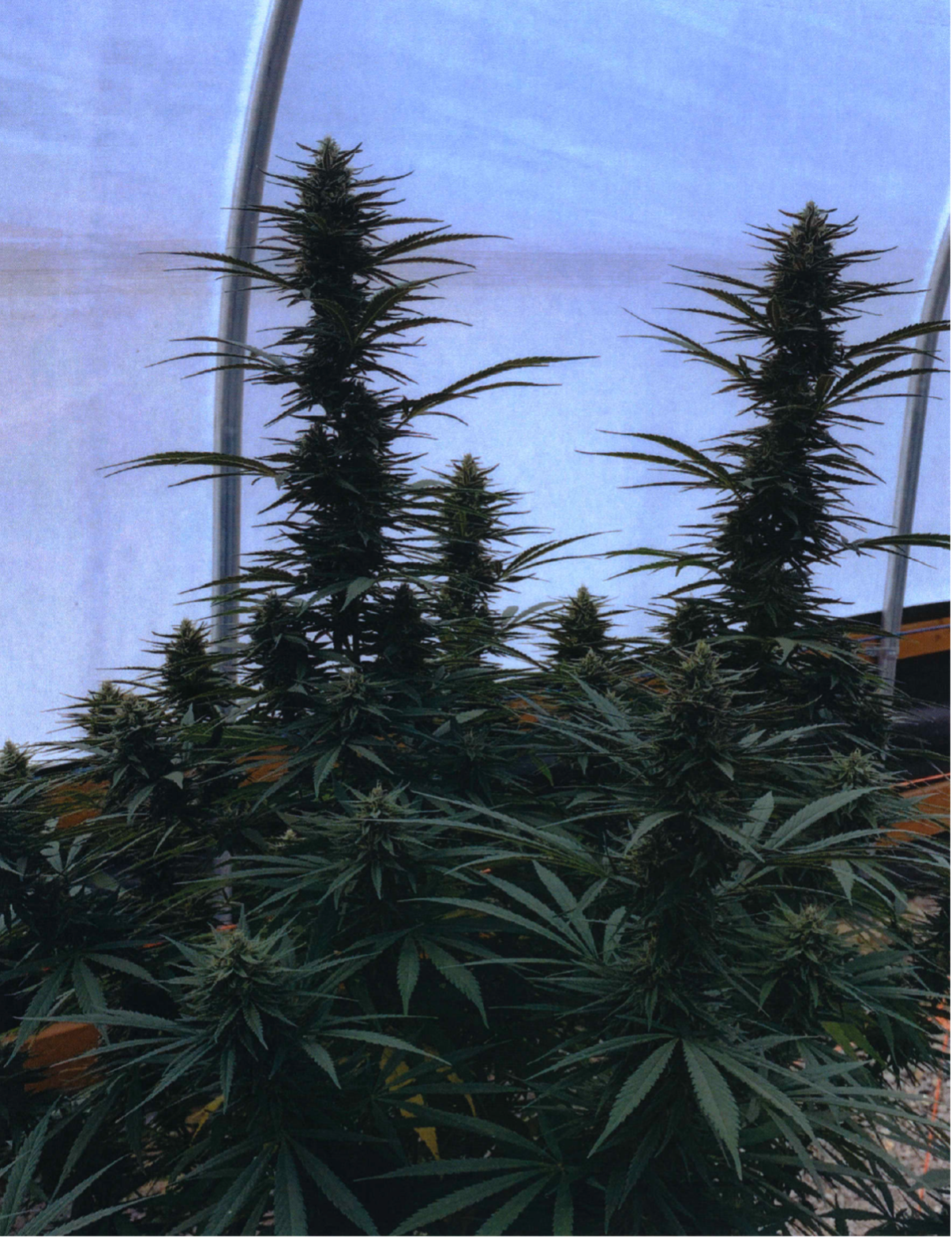



21) PP33,182 (22 Jun. 2021) | Painted Lady
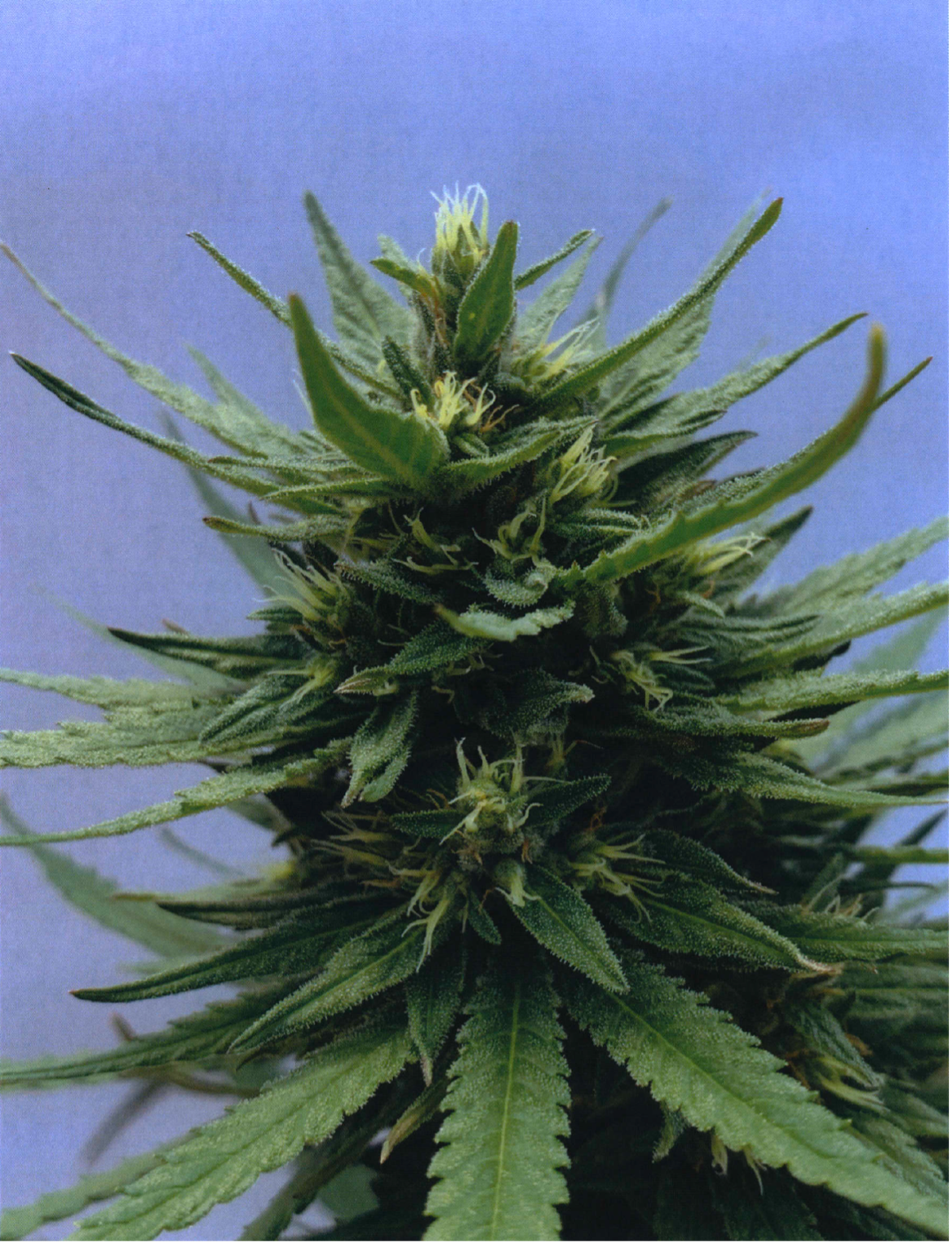

immature flower
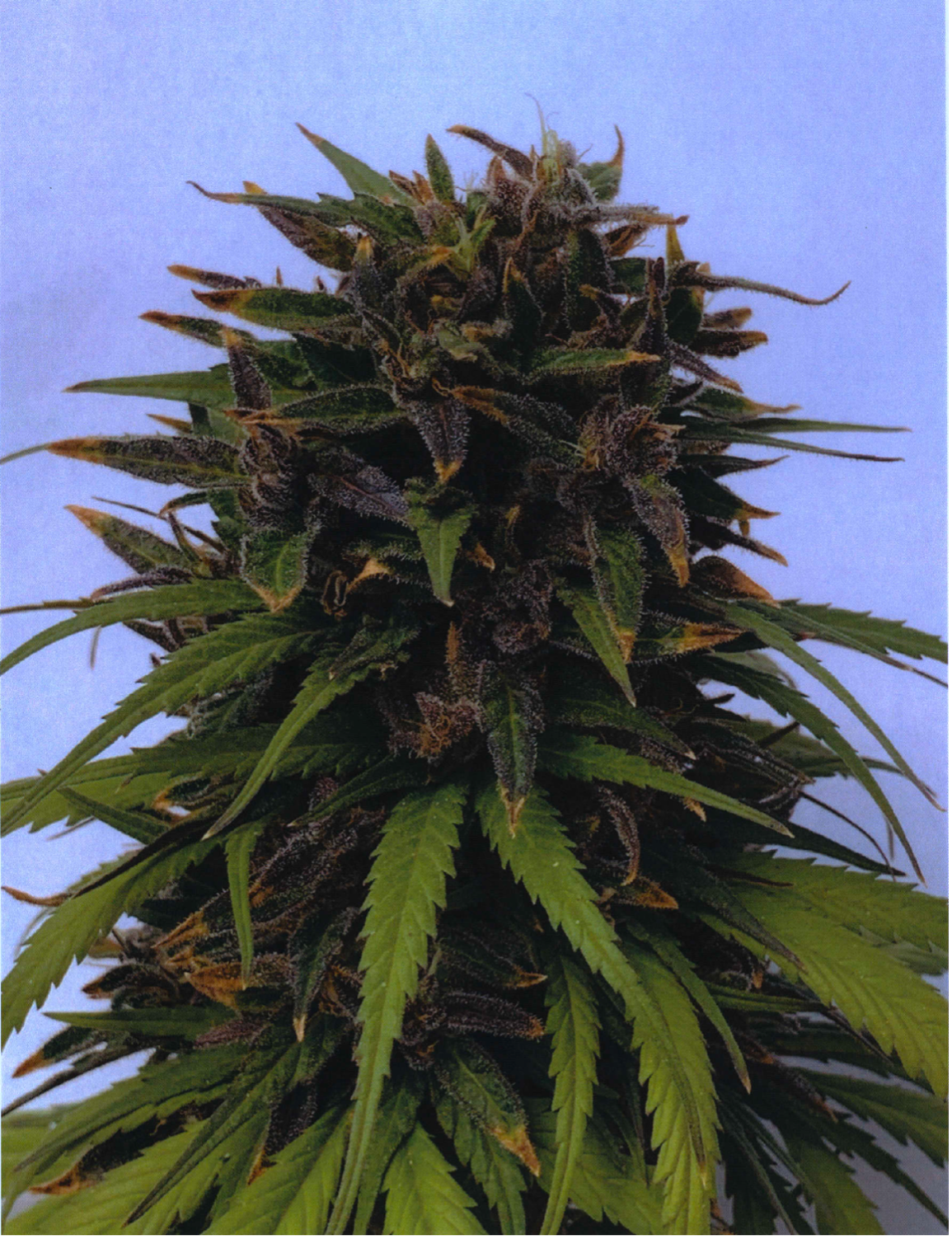

mature flower
22) PP33,183 (22 Jun. 2021) | C2B
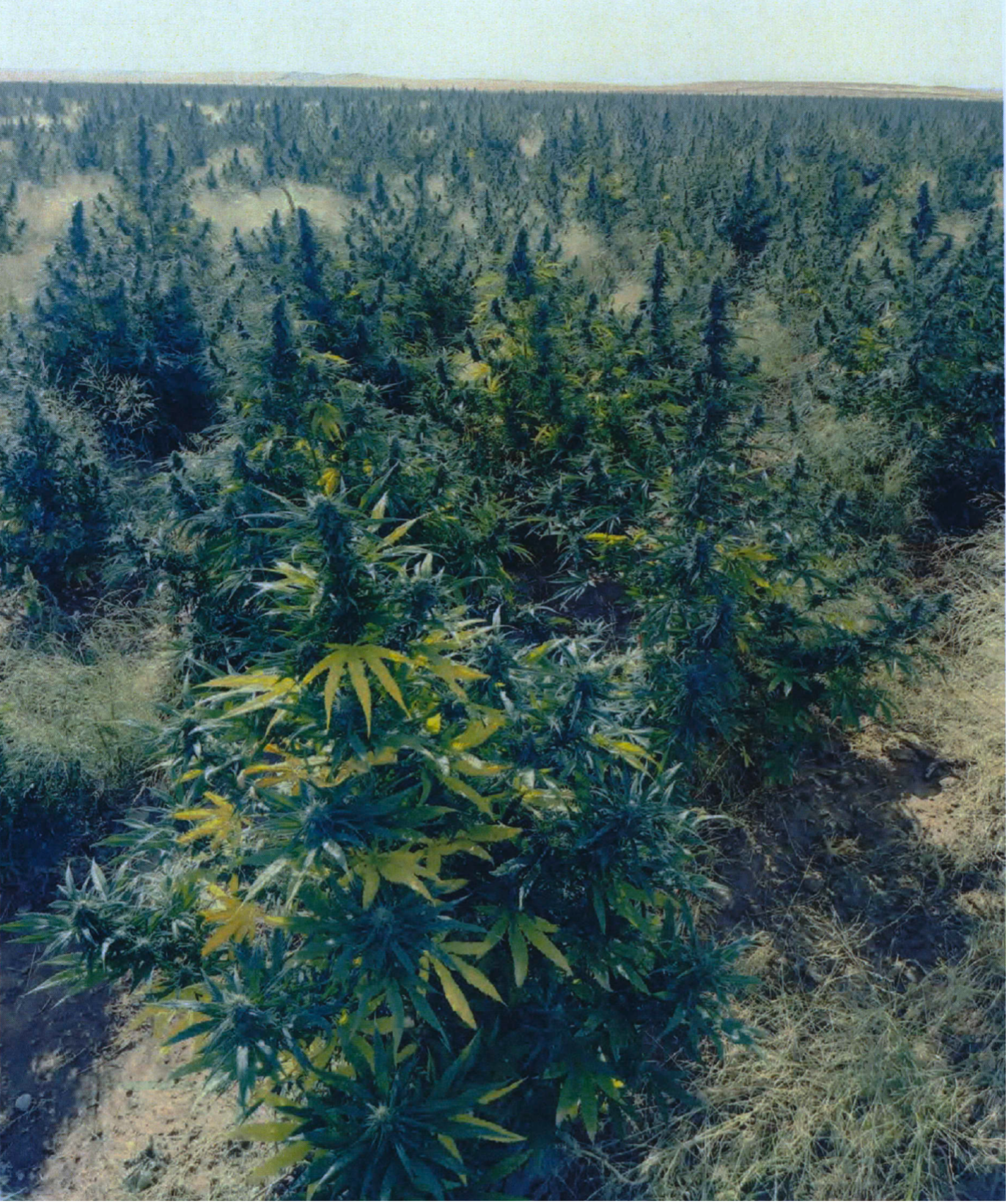

23) PP33,210 (29 Jun. 2021) | V3
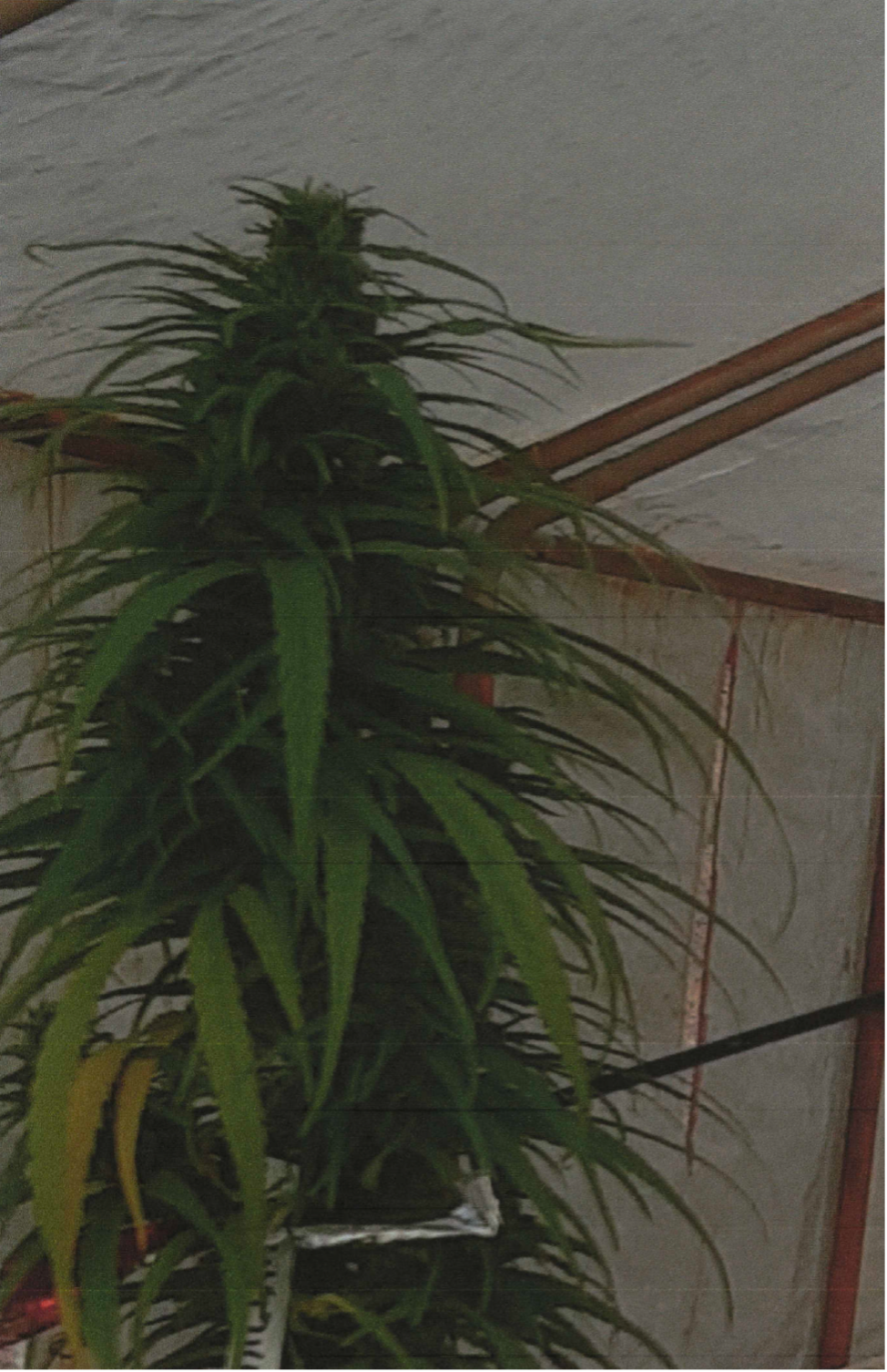

24) PP33,211 (29 Jun. 2021) | V2
V2 is a C. sativa variety that resulted from the same parental varieties as V3.
V2 differs from V3 in that V3 has coarsely serrated leaflets that are longer than V2. Further, the V2 variety is higher in THCV than THC, whereas V3 is higher in THC than THCV. And V2 has a later flowering cycle and a later development/showing of sex than V3.
The V2 variety differs from V1 primarily based on color characteristics.


25) PP33,212 (29 Jun. 2021) | V1
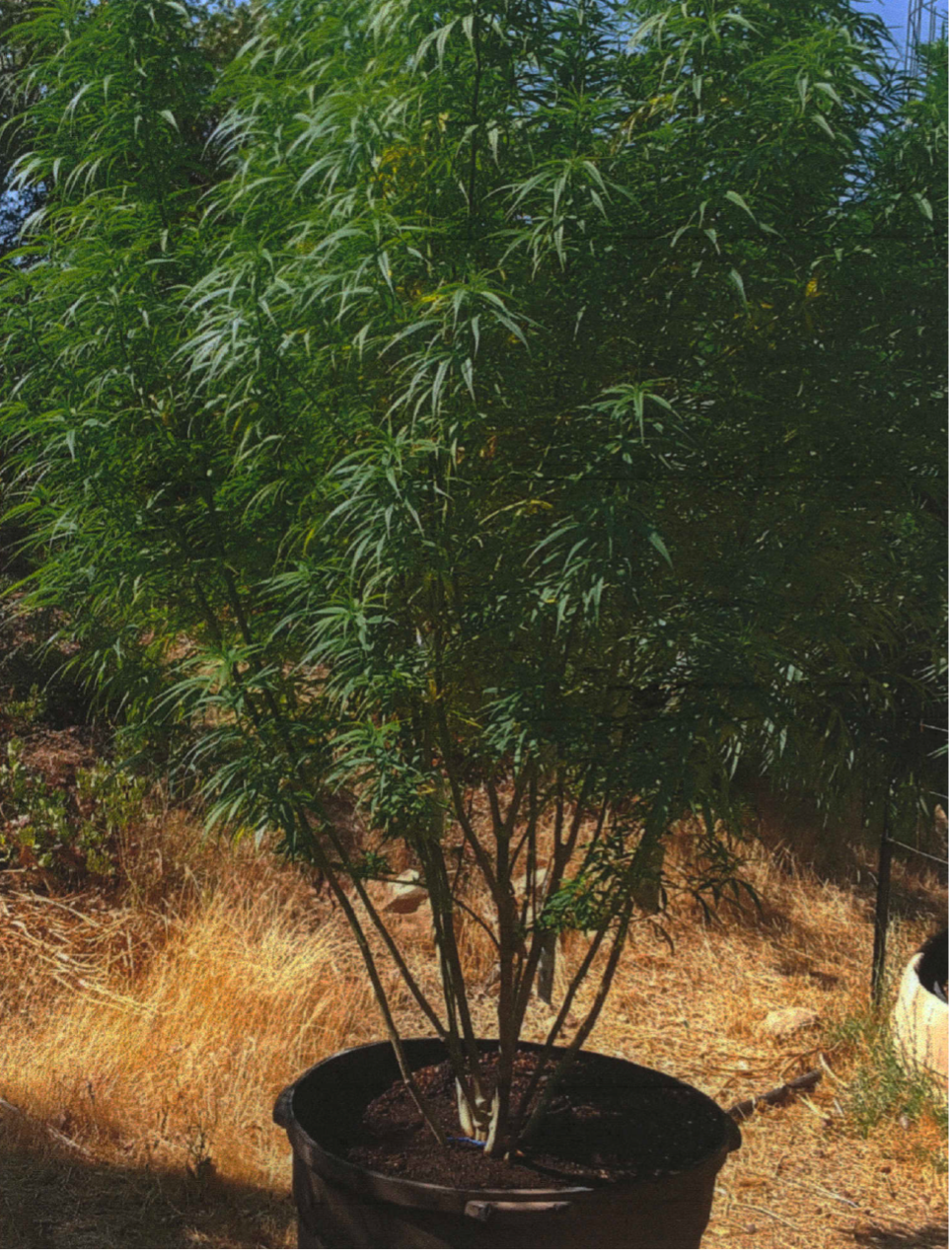



26) PP33,213 (29 Jun. 2021) | Honey H-2018
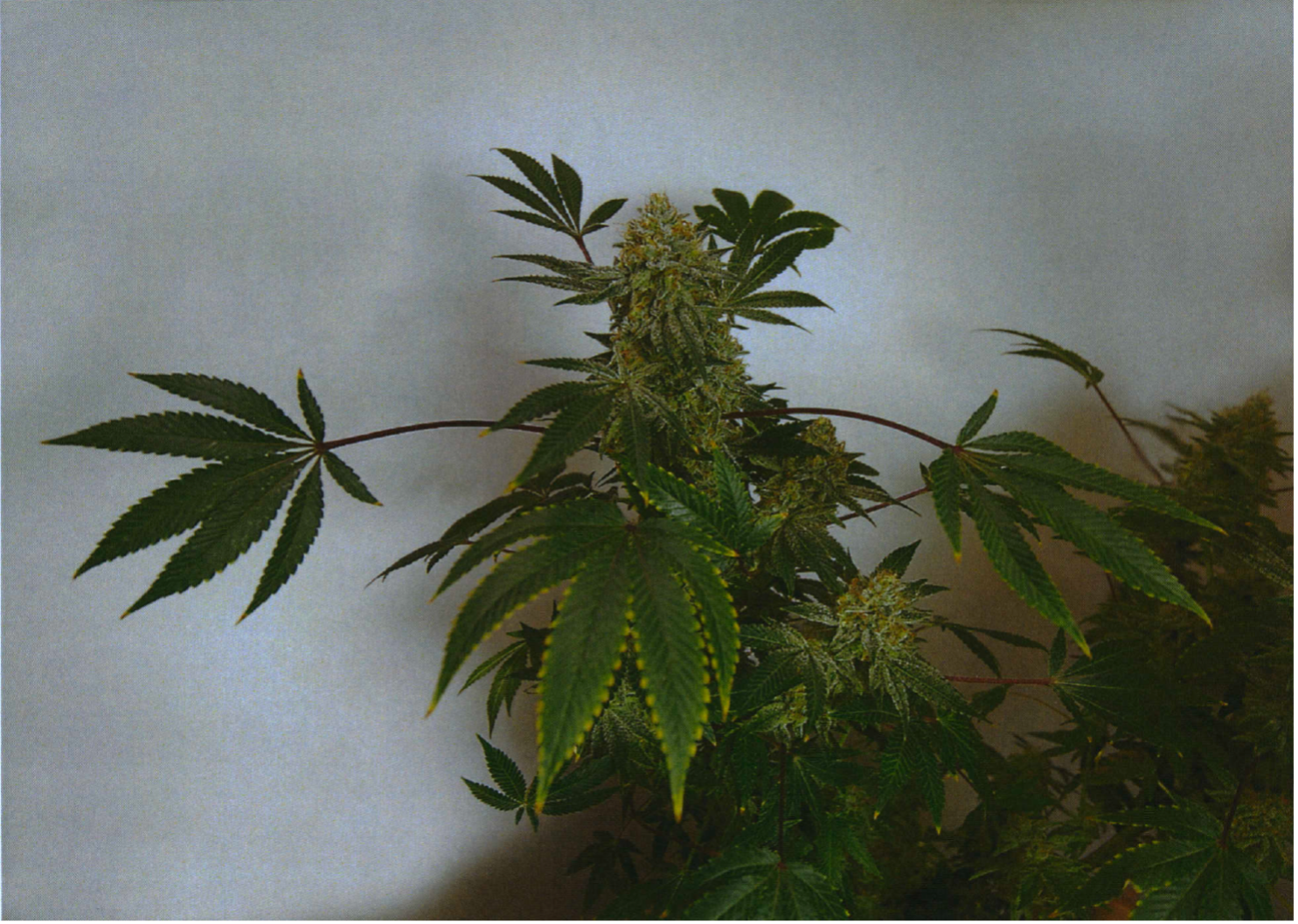

Takeaways
A couple of things are apparent after reviewing these 26 cannabis plant patents.
First, a thorough description of the plant is required. The description typically includes relevant information about the breeding program that resulted in the new cultivar; a classification of the new cultivar; an identification of the plant's parents and their respective classifications; and information about the plant's origin, propagation, and growth characteristics. The description further includes information about the new cultivar's foliage, stem, flowers, and inflorescence.
Second, the description usually identifies any unique features possessed or exhibited by the new cultivar. For example, several patents outline the chemical composition of the resin found in the glandular trichomes of the new cultivar, including the specific cannabinoids and/or terpenes found in a high concentration relative to one or more known cultivars or with the cannabis genera generally. Often, a comparison of physical attributes is also provided. For example, the height and width of the new cultivar can be compared to the parent plants or to a known species are provided. Additional properties, such as the aromas and colors of the cultivar, are also included.
Endnotes
[i] U.S. PP30,639, at 1:6–11 (column:line).
[ii] U.S. PP31,535, at 4:52–66.
[iii] U.S. PP27,474, at 3:39–55.
[iv] U.S. PP31,535, at 5:38–6:25.
[v] U.S. PP30,434, at 8:59–9:20.; U.S. PP31,707, at 6:11–29.
[vi] U.S. PP27,475, at 3:40–66; U.S. PP30,434, at 9:2–20.
[vii] U.S. PP31,535, at 5:12–37.
[viii] U.S. PP27,475, at 4:7-10.
Contact an Experienced IP Lawyer
If your team is cultivating new cannabis varieties, don't miss out on your chance to protect your special cultivars with a plant patent. Schedule a free consultation with Nolan IP Law today and we will put together a plan for success. Please visit the Attorney Profile page for information on our attorney’s experience.